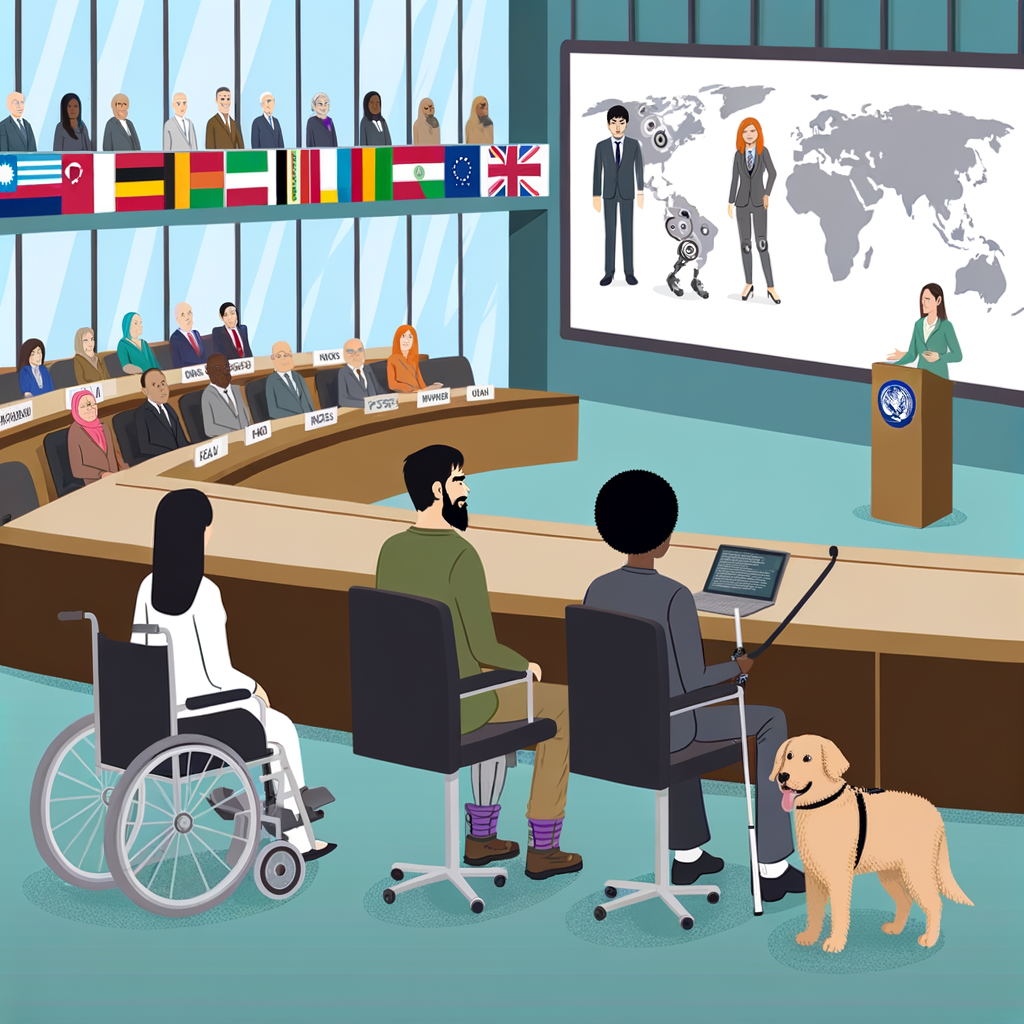U.S. Access Board Unveils AI Findings for Disability Access
Time: 2:00 – 3:30 p.m. (ET). Date: Thursday, December 12, 2024. As part of the Developing Artificial Intelligence on Accessibility Conference, the U.S. Access Board shared groundbreaking findings that underscore the potential of artificial intelligence (AI) to enhance accessibility for people with disabilities. This event marked a crucial moment in our ongoing dialogue around technology and inclusivity.
The Intersection of AI and Accessibility
As technology continues to evolve, it becomes increasingly important to explore how these advancements can be utilized to create a more inclusive society. AI, in particular, holds promise as a tool that can help overcome various barriers faced by individuals with disabilities. From personalized assistive technologies to improved communication methods, the applications are vast.
Key Findings from the Conference
During the conference, experts presented several key findings related to AI and disability access. Among the highlights were:
- AI-Powered Assistive Technologies: New AI-driven applications, such as virtual assistants and smart home devices, are revolutionizing how individuals with disabilities interact with their environments.
- Improved Navigation Tools: AI-enhanced navigation systems are being developed to help visually impaired individuals move more independently and safely within public spaces.
- Augmented Communication: AI technologies are facilitating better communication for individuals with speech impairments, reducing frustration and enhancing social interactions.
- Personalized Learning Environments: AI can create tailored educational experiences for students with disabilities, addressing their unique needs and learning styles.
Real-Life Applications
To illustrate these findings, several case studies were presented during the conference:
“The integration of AI in our daily lives is transforming the landscape of accessibility. It’s not just about technology; it’s about empowerment,” said Dr. Lisa Haney, an accessibility researcher.
Case Study 1: AI Navigation for the Visually Impaired
One memorable case involved a startup company developing an AI navigation app specifically designed for visually impaired users. By using real-time data and machine learning algorithms, the app provides audial cues to help users navigate through complex environments. Feedback from users highlighted significant improvements in their ability to travel independently.
Case Study 2: Augmentative Communication Devices
Another presentation focused on the use of AI in augmentative and alternative communication devices (AAC). These devices help individuals with speech impairments communicate more effectively. By utilizing natural language processing techniques, the devices can interpret user inputs and generate appropriate responses, fostering more natural conversations.
Challenges and Considerations
While the possibilities are exciting, it is crucial to acknowledge the challenges and ethical considerations surrounding the use of AI in accessibility:
- Data Privacy: Collecting and using personal data to enhance accessibility must be balanced with the right to privacy.
- Bias in AI Algorithms: Ensuring that AI systems are free from biases that can marginalize certain groups is essential for fair accessibility solutions.
- Cost of Implementation: Developing and deploying AI solutions can be expensive, raising questions about affordability and access.
The Role of the U.S. Access Board
The U.S. Access Board plays a crucial role in ensuring that these technological advancements align with federal accessibility standards. By conducting research and providing guidance, the Board helps bridge the gap between innovation and regulation.
“Our mission is to promote equality in accessibility, and we must ensure that emerging technologies do not leave anyone behind,” stated Chairperson Jonathan Smith during the conference.
Looking Ahead: The Future of AI and Accessibility
The findings shared at the conference signal a hopeful future where AI continues to drive change in accessibility. As advocates, researchers, and technologists collaborate, the potential for innovative solutions will only grow. The emphasis on prioritizing the needs of individuals with disabilities in AI development is crucial for ensuring that these technologies are truly accessible.
How You Can Get Involved
For those interested in contributing to this crucial field, there are several ways to get involved:
- Stay Informed: Follow ongoing research and discussions in accessibility and AI by visiting sites such as U.S. Access Board and other relevant organizations.
- Advocate for Inclusive Technology: Engage with local and national advocacy groups focused on disability rights and technology inclusion.
- Join Workshops and Conferences: Participate in events that focus on AI and accessibility, and contribute your voice to the conversation.
The Bottom Line
The December 12 conference showcased the remarkable potential of AI technologies to enhance accessibility for individuals with disabilities. By embracing innovation while also addressing the ethical and practical challenges, we can work towards a more inclusive future. The U.S. Access Board’s ongoing efforts will be critical in shaping this landscape, as we strive to empower all individuals through the responsible use of technology.
As we move forward, let us remember: true accessibility means giving everyone the opportunity to thrive, and technology—especially AI—can play a pivotal role.


